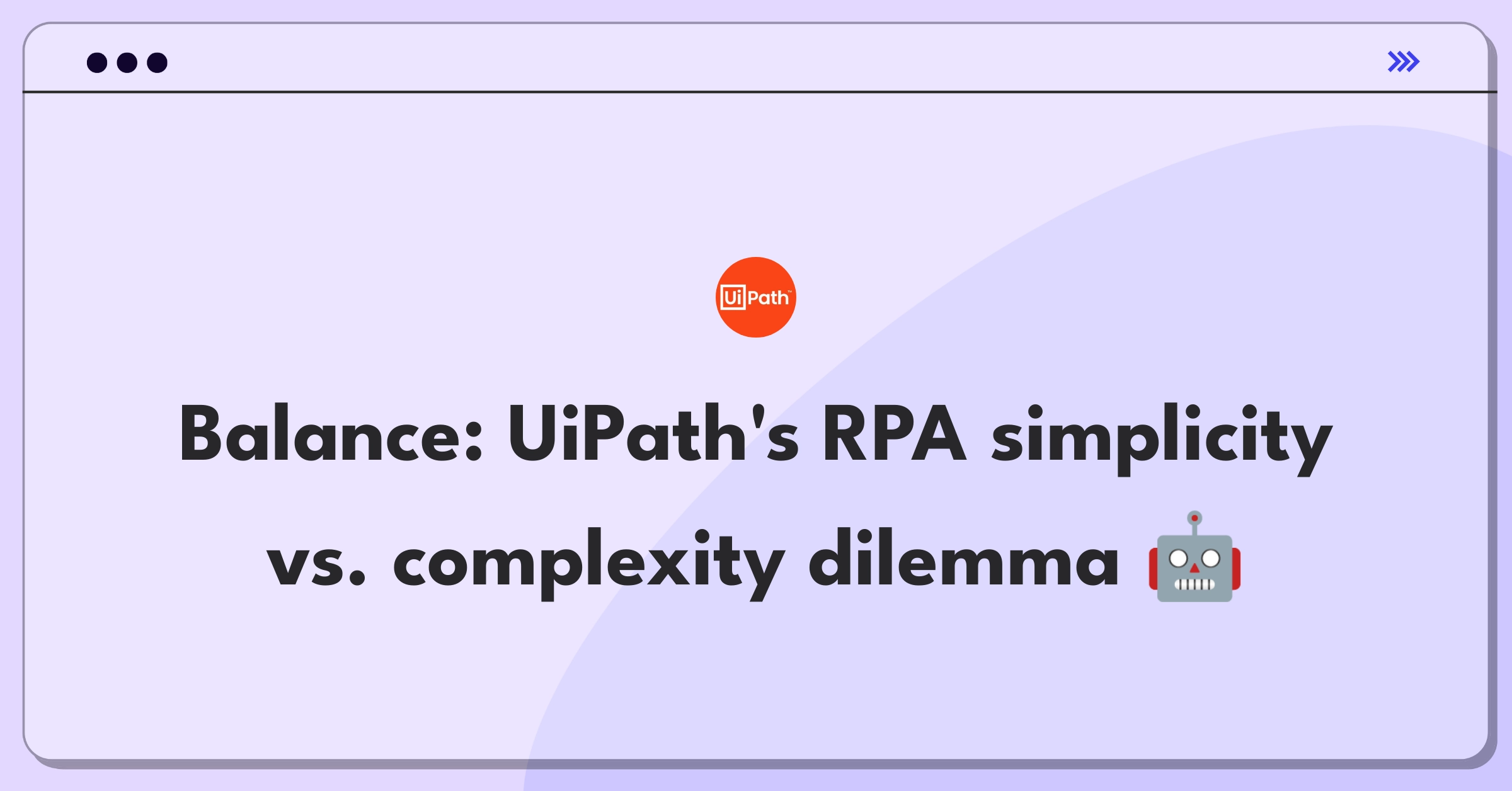Introduction
Balancing ease of use for citizen developers with advanced features for experienced users is a critical trade-off for UiPath's product strategy. This scenario involves navigating the complexities of serving diverse user segments while maintaining a cohesive product experience. I'll address this challenge by analyzing the trade-offs, proposing metrics, and designing experiments to inform our decision-making process.
Analysis Approach
I'll start by asking clarifying questions, then identify the trade-off type, analyze the product, and propose a hypothesis. From there, I'll define key metrics, design an experiment, plan data analysis, create a decision framework, and finally provide recommendations and next steps.
Step 1
Clarifying Questions (3 minutes)
Why it matters: Helps prioritize features for different user segments Expected answer: Citizen developers are a growing segment but experienced users drive most revenue Impact on approach: Would influence feature prioritization and UI/UX decisions
Why it matters: Ensures alignment with company strategy Expected answer: Critical for market expansion and competing with low-code platforms Impact on approach: Would inform the level of investment in simplification vs. advanced features
Why it matters: Determines the technical approach to solving the trade-off Expected answer: Platform is modular but significant work required for major UI changes Impact on approach: Would influence timeline and resource allocation for implementation
Why it matters: Affects the sustainability of the chosen solution Expected answer: Limited resources, need to be strategic about feature development Impact on approach: Might lead to a phased approach or prioritization of certain features
Why it matters: Helps prioritize this initiative against other product priorities Expected answer: Increasing pressure from low-code competitors in the citizen developer space Impact on approach: Would influence the aggressiveness of our timeline and go-to-market strategy
Subscribe to access the full answer
Monthly Plan
The perfect plan for PMs who are in the final leg of their interview preparation
$99 /month
- Access to 8,000+ PM Questions
- 10 AI resume reviews credits
- Access to company guides
- Basic email support
- Access to community Q&A
Yearly Plan
The ultimate plan for aspiring PMs, SPMs and those preparing for big-tech
$99 $33 /month
- Everything in monthly plan
- Priority queue for AI resume review
- Monthly/Weekly newsletters
- Access to premium features
- Priority response to requested question


.png)